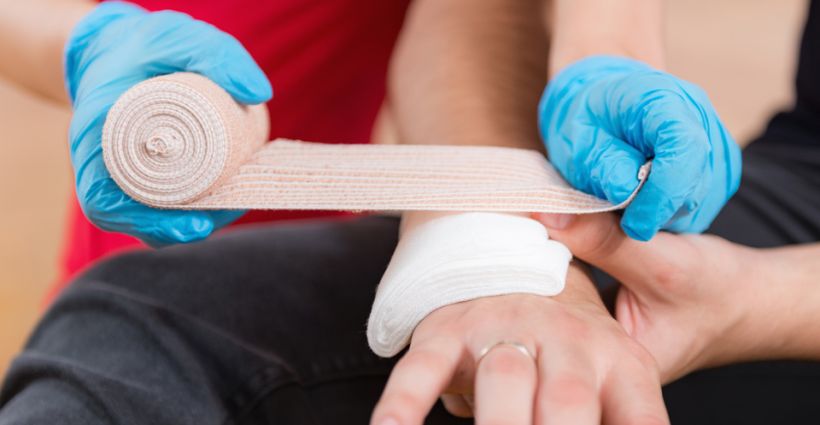How to Make Your First Aid Class More Engaging

While CPR and AED course topics provide ample hands-on learning and interaction, First Aid class topics are more lecture-based and jam–packed with information to absorb. This can often make the course feel like it is moving slower for both students and Instructors. But it doesn’t have to be that way. Here are some creative ideas to make First Aid more engaging and keep your students’ full attention.
Break Up Lecture
Most students won’t be able to focus for 3+ hours straight, especially if the Instructor is using lecture as the primary method of delivery.
- Provide more breaks – Breaks can help students and Instructors hit the reset button when it comes to refocusing. Allow students to use the restroom or have everyone do a quick stretch in the room to wake their senses back up.
- Take advantage of hands-on skills – Don’t rush through First Aid skill practice just to get to the next topic. These skills are important for students to fully learn, and they can be used to get the class interacting again.
- Motivate students with freebies – Use your students to help move the course along by getting them to answer questions and volunteer their own experiences in place of a long-winded lecture. Use snack-size candy bars, branded pens or keychain barriers to reward your students for interacting.
Get Creative with Props
Many students are tactile learners – they need to touch things and practice using them in order to retain the information. Bring examples of First Aid items that will be discussed, so students can pass them around and handle them. Consider adding these items to your Instructor toolbox.
Shaving Cream
Have students rub shaving cream on their gloves to simulate blood when practicing proper glove removal. This will give students a more realistic experience – if it’s not done correctly, they will get splattered or smear it on their clothing or skin. Some Instructors choose to use other mediums like ketchup, but keep in mind that any splatters could stain your student’s clothing.
Anti-choking Trainer Vest
Students LOVE using the anti-choking trainer vest. Many students haven’t seen it before and find that it’s a fun experience to use it. The whole class will be laughing together and enjoying learning about the topic.

Tourniquet
Students can gently wrap the tourniquet around their own arm or use a pool noodle or other prop to get the full effect of tightening the tourniquet.
Epinephrine Auto-Injector Trainers
Students are required to pass a skill check for using an epinephrine auto-injector when discussing allergic reactions. We recommend providing at least 1 auto-injector trainer for every 2 students.
QuikClot Combat Gauze
Pass around a combat gauze when discussing bleeding and wounds. These are designed for instructional use (no hemostatic properties) and helps teach bleeding control using the aid of a hemostatic bandage.
Student Book Splint
When teaching your students how to apply a splint, try using the student book as the actual splint! Not only are you teaching a valuable skill, you are also teaching them to be creative and use objects they have around them to administer first aid.
Severed Finger
You read that right! Pass around a finger in a bag when discussing traumatic injuries. These and other relevant props (ex: skin with burns or limbs with impaled objects) can be purchased through online retailers or at a Halloween store.
First Aid Training Kit
Give each student their own training kit for practicing skills. You can make them yourself or buy a training kit that is ready to go with everything they need: gloves, gauze pads, rolled gauze, and alcohol wipes.
The point is to get creative and think outside the box! Use props that support what you’re teaching and give students a reason to refocus on what’s being taught.


